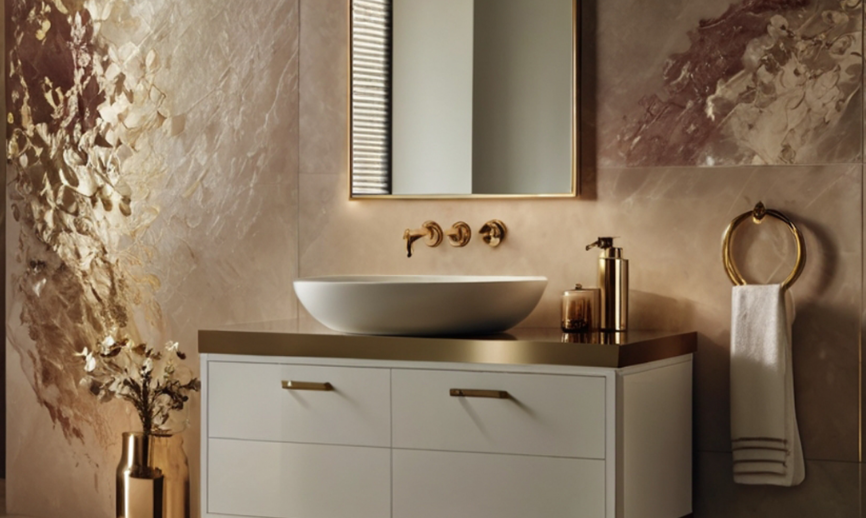Eco-Friendly Options for Flush Tanks and Seat Covers: A Sustainable Bathroom Choice

Designing an environmentally friendly bathroom is a great way to decrease your carbon footprint and conserve on utility costs. Although low-flow faucets and recycled items are usually the center of attention, flush tanks and toilet cover designs also share responsibility in making it green. The appropriate models can help decrease water consumption, minimize waste, and make your home greener. Here's how you can make eco-friendly decisions in choosing flush tanks and seat covers for a sustainable bathroom.
1. Water-Saving Flush Tanks: Intelligent and Sustainable
Efficiency in terms of water use is a big priority when using eco-friendly flush tanks. The older toilets with up to 13 liters usage per flush seem to be wasting a lot compared to the efficient eco-friendly solutions that reduce such usage drastically.
Dual-Flush Systems
Dual-flush tanks provide two modes of flushing:
Half-flush for liquid waste (approximately 3–4 liters)
Full flush for solid waste (approximately 6 liters)
This adaptability minimizes water use over time without affecting performance.
High-Efficiency Toilets (HET)
Certified high-efficiency flush tanks consume no more than 4.8 liters per flush. Choose models that are WELS (Water Efficiency Labelling and Standards) or EPA WaterSense certified to ensure savings and performance.
Pressure-Assisted Systems
These employ pressurized air to push water into the bowl with greater force, using less water per flush. Though slightly more noisy, they are extremely efficient and suitable for conservation-conscious homes.
2. Environmentally Friendly Seat Cover Materials
Selecting seat covers produced from environmentally friendly materials not only minimizes plastic waste but also ensures healthier indoor air quality.
Recycled Plastics
Most contemporary toilet seat covers are created using recycled polypropylene or thermoplastics, minimizing virgin plastic production requirements. These materials are resistant to wear and tear, easy to clean, and appear just as modern as conventional choices.
Bamboo and Wood-Based Covers
For an all-natural, biodegradable choice, turn to bamboo or sustainably sourced wood seat covers. Bamboo grows quickly, is low-maintenance in its need for water, and is a renewable crop, so it makes a top sustainable choice for ecologically-minded houses.
Low-VOC, Non-Toxic Finishes
Seat covers on some products off-gas volatile organic compounds (VOCs) from their finishes or adhesives and that can feed into indoor air pollution. Go for non-toxic, low-VOC coated covers for your eco-friendly, health-conscious bathroom.
3. Long-Lasting Design and Replaceable Parts
Sustainability is not only about materials, but about durability and repairability too. Products that are longer-lasting create less waste and conserve resources.
Search for:
Seat covers whose hinges or hardware can be replaced
Flush tanks with visible internal components that can easily be fixed
Warranty-supported models from well-known brands
Paying for quality instead of cheapness avoids frequent replacement and landfill dumping.
4. Smart Flush Technology
New eco-friendly toilets also come with touchless or intelligent flush systems, which further minimize water wastage by avoiding over-flushing and enabling customizable water volume settings.
Some even come equipped with sensors that adjust the flush strength according to the nature of the waste, ensuring maximum efficiency while ensuring sanitation.
5. Eco-Friendly Manufacturing and Packaging
Support companies that adopt sustainable production practices:
Use recyclable or biodegradable packaging
Adopt ethical labor practices
Employ energy-efficient manufacturing processes
Such firms usually make their environmental commitments on their websites or product labels.
Conclusion
It takes more than eco-branded cleaners or recycled tiles to make a sustainable bathroom—it begins with building blocks such as flush tanks and seat covers. By opting for water-saving systems, recycled or renewable materials, and designs that last, you can cut your environmental impact dramatically while experiencing a sleek, efficient bathroom.
Resources:
https://writeablog.net/juliafernandaz/why-do-you-need-a-yoga-mat
https://rentry.co/How-to-decorate-wall
- Art
- Causes
- Crafts
- Dance
- Drinks
- Film
- Fitness
- Food
- Games
- Gardening
- Health
- Home
- Literature
- Music
- Networking
- Other
- Party
- Religion
- Shopping
- Sports
- Theater
- Wellness


